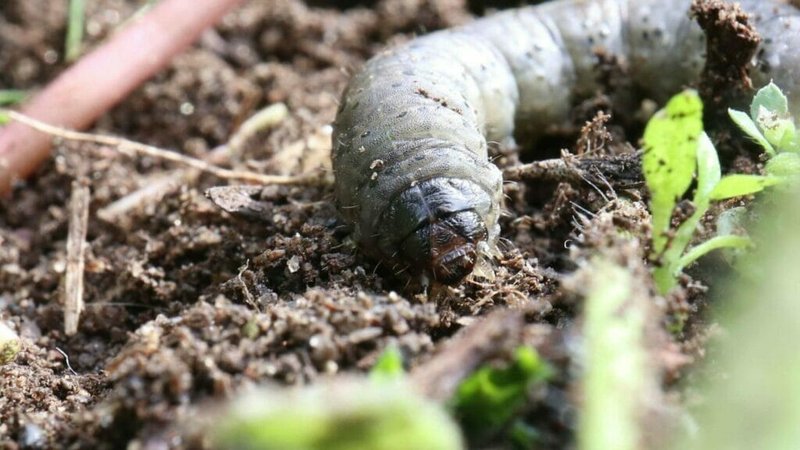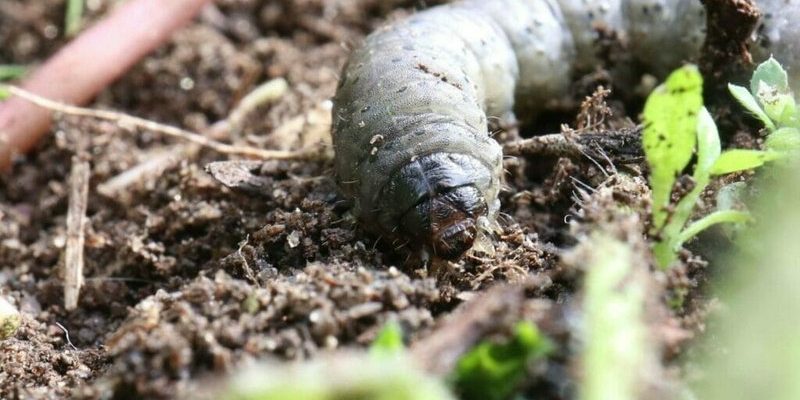
Grub worms, primarily the larvae of beetles, are notorious for their appetite for grass roots. They might seem harmless at first glance, but they can lead to extensive damage if left unchecked. Think of them as the backyard bullies that feast on your grass while you’re not looking. Understanding what they are, how to identify them, and what you can do about them is essential for keeping your lawn healthy. So, grab your favorite drink, and let’s unravel the mystery of these lawn invaders together.
What Exactly Are Grub Worms?
Grub worms refer mainly to the larval stage of various beetles, most commonly Japanese beetles, June bugs, and European chafers. These larvae are typically white, C-shaped, and can range from a half-inch to an inch long. They thrive in moist soil, feeding on the roots of your grass and other plants. Imagine them as tiny, hungry ghosts that come out to feast on your lawn while you’re busy doing other things.
Interestingly, the lifecycle of these beetles plays a critical role in grub development. Female beetles lay their eggs in the ground during the summer. Once these eggs hatch, the young grubs start to munch on the grass roots, often peaking in numbers during late summer and early fall. This tendency to cluster in specific areas can lead to brown patches in your lawn, which become even more evident as the warm weather fades.
How to Recognize Grub Worm Damage
You might wonder how to tell if your lawn has been invaded by these pesky grubs. The signs can be pretty clear once you know what to look for.
- Browning Grass: If you notice patches of grass turning brown while the surrounding areas remain green, it’s a telltale sign. Grub worms are munching on those roots and leaving your grass thirsty and weak.
- Spongy Lawn: When you walk on your lawn, does it feel unusually spongy? This can happen when grubs eat away the roots, causing the grass to lose its grip on the soil.
- Animal Activity: Increased activity from animals like birds or raccoons digging in your lawn can indicate that they’ve caught on to the grub buffet beneath the surface.
Are you starting to see the signs? It’s important to act before the problem escalates!
Why Do Grub Worms Matter?
You might be asking yourself, “Why should I care about these grub worms?” Well, the answer is straightforward. Grubs can seriously damage your lawn, leading to costly repairs and less enjoyment of your yard. A healthy lawn not only enhances your home’s curb appeal but also contributes to the overall health of your yard ecosystem.
If grubs go unchecked, they can create a cycle of lawn deterioration. As they eat more roots, healthy grass weakens, making it easier for weeds to take hold. This can lead to an even more significant infestation problem down the line. Plus, a lawn filled with grub worms is a lawn that attracts more predators such as birds and rodents, creating a whole new set of issues.
Taking care of your lawn is not just about aesthetics; it’s about maintaining a balanced environment for flora and fauna in your backyard.
How to Check for Grub Worms
To see if grubs are indeed the culprits behind your lawn issues, you can perform a simple test. This involves peeling back a section of your grass to see what’s going on below the surface.
1. **Identify the Affected Area:** Pick a small section of your lawn where the grass appears brown or unhealthy.
2. **Dig in:** Use a shovel or trowel to dig up a square foot of sod about 3-4 inches deep.
3. **Inspect the Soil:** Look closely for white, C-shaped grubs. If you find more than 5-10 grubs in that square foot, it’s time to consider taking action.
This check-up can give you valuable insight into the health of your lawn.
Prevention Is Key
It’s always easier to prevent a problem than to solve it. Here are some effective strategies to keep grub worms at bay:
- Healthy Lawn Practices: Maintaining a healthy lawn through proper watering, fertilizing, and aeration can discourage grubs from taking hold.
- Resistant Grass Varieties: Consider planting grass types that are more resistant to grub infestations.
- Regular Lawn Inspections: Check your lawn regularly for early signs of grub activity and take action promptly if needed.
Taking these preventative measures can save you time, effort, and money down the line.
How to Get Rid of Grub Worms
If you’ve confirmed that grubs are already wreaking havoc on your lawn, it’s time to act. Here are some methods to tackle the problem effectively:
1. **Chemical Treatments:** There are various insecticides designed specifically for grubs. Look for products containing **Imidacloprid or Chlorantraniliprole** as active ingredients.
2. **Beneficial Nematodes:** These microscopic worms are natural predators of grubs. You can purchase them and apply them to your lawn to reduce grub populations without harsh chemicals.
3. **Dethatching and Aeration:** If your lawn is heavily thatched, removing the excess layer can help improve air circulation and reduce grub-friendly environments.
Make sure to follow the instructions carefully if you decide to use chemicals. Safety first!
When to Call a Professional
Sometimes, dealing with grubs can feel overwhelming. If you’ve tried various DIY methods and still see no improvement, it might be time to call in the professionals. Lawn care specialists can offer targeted treatments and help restore your lawn to its former glory. Plus, they can provide ongoing maintenance to keep those pesky grubs from returning.
Grub worms may be small, but they can cause significant damage to your lawn if you aren’t careful. Understanding what they are, how to identify their presence, and knowing what actions to take can make all the difference. By adopting good lawn care practices and staying vigilant, you’ll keep your yard looking lush and inviting.
Remember, a healthy lawn isn’t just about how it looks—it’s about creating a vibrant space for you, your family, and the ecosystem around you. Don’t let grubs steal that joy. Stay informed, take action, and watch your lawn thrive!

